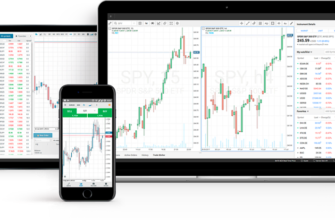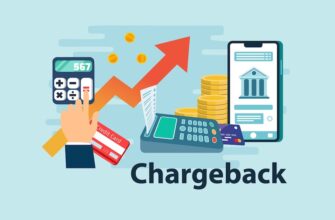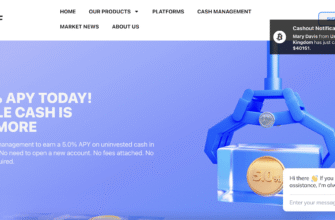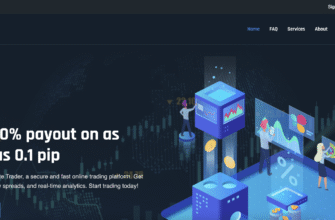- Introduction: The Rise of Online Broker Scams
- What Is a Fake Broker?
- Why Are Fake Brokers Created?
- How Fake Brokers Scam Their Victims
- Real-Life Example: A Typical Fake Broker Case
- Psychological Tactics Used by Fake Brokers
- Legal Challenges: Why Recovery Is So Difficult
- How to Protect Yourself (and Others)
- Conclusion: Vigilance Is the Best Defense
Introduction: The Rise of Online Broker Scams
Over the past decade, financial markets have become increasingly accessible to retail investors. With a few clicks, anyone can open a trading account and start buying or selling assets. However, this convenience has also created fertile ground for fraudulent entities—fake brokers—to thrive. These scams often promise extraordinary returns, sophisticated platforms, and professional account management. What unsuspecting users receive instead is deception, financial loss, and, in many cases, zero legal recourse.

But what exactly are fake brokers? Why are they created, and how do they manage to lure even experienced investors into their traps? In this deep-dive, we’ll examine the inner workings of fake brokers, their psychological manipulation tactics, red flags to watch out for, and—most importantly—how to protect yourself and others from becoming victims.
What Is a Fake Broker?
At its core, a fake broker is a company or individual posing as a legitimate financial intermediary. They typically claim to offer trading or investment services—forex, cryptocurrencies, stocks, commodities—but in reality, they do not place any trades in the real market. Instead, their main goal is to extract money from clients through deceitful means.
Unlike regulated brokers who must comply with strict licensing, reporting, and fund-segregation rules, fake brokers operate offshore, often under fake licenses or using cloned websites that mimic real institutions.
Why Are Fake Brokers Created?
Fake brokers exist for one reason: profit through deception. Here are the main incentives driving their creation:
1. Low Barriers to Entry: Setting up a fake website and claiming to be a broker requires minimal capital and basic technical skills.
2. Lack of Regulation Enforcement: Many fake brokers operate in countries with weak financial oversight or nonexistent enforcement, allowing them to remain active for months or even years.
3. Psychological Exploitation: The promise of high returns, personal account managers, and exclusive investment opportunities appeals to both greedy and desperate investors.
4. Hard-to-Trace Payments: They often accept payments in cryptocurrencies or via untraceable banking methods, making recovery of funds extremely difficult.

How Fake Brokers Scam Their Victims
Fake brokers operate with scripted psychological tactics, advanced CRM systems, and sales departments designed to keep users hooked. Here’s how the fraud typically unfolds:
1. The Hook (Initial Contact)
Scams often start through:
• Social media ads promising “passive income”
• Cold calls from fake analysts
• Spam emails with exclusive investment invitations
The initial interaction is friendly and informative, designed to gain trust and initiate a small deposit (often $250–$500).
2. Building the Illusion
Once the first deposit is made:
• The client sees a professional-looking trading platform (fake or simulated)
• The “trader” calls regularly with updates on “amazing performance”
• Fake profits begin to show up in the dashboard
This phase is all about establishing confidence and urgency.
3. Upselling and Exploitation
Now that trust is established, the broker pushes for:
• Larger deposits (“Gold” or “VIP” accounts)
• Fake taxes or withdrawal fees
• Referral programs (“bring a friend” scams)
Victims are emotionally manipulated with lines like:
“You’re so close to financial freedom, just one more push.”
4. The Exit
Eventually:
• The platform stops responding
• Withdrawals are denied or delayed indefinitely
• The website disappears, and phone numbers are disconnected
Real-Life Example: A Typical Fake Broker Case
Consider the case of “AlphaFXPro” — a now-defunct platform that operated under a .net domain and claimed to be licensed in Switzerland. Victims reported:
• Losing access to their accounts after requesting withdrawals
• Being charged “regulatory compliance” fees that didn’t exist
• Fake MT4 platforms that never placed real market orders
Investigations later revealed the company had no legal registration and operated from an anonymous server in Eastern Europe. Losses exceeded $12 million across multiple countries.
Psychological Tactics Used by Fake Brokers
Understanding the psychology of manipulation is essential. These scams often succeed because they:
• Exploit greed and fear of missing out (FOMO)
• Use flattery to build rapport: “You’re smarter than our usual clients”
• Create urgency: “Last chance to join the bonus program”
• Apply guilt: “If you stop now, you’ll lose everything you’ve worked for”
Many fake brokers train their staff using telemarketing scripts and NLP (neuro-linguistic programming) techniques to override rational thinking.
Legal Challenges: Why Recovery Is So Difficult
Even when victims realize they’ve been scammed, recovering funds is an uphill battle:
1. Jurisdiction issues – The company may be “registered” in offshore zones like St. Vincent & the Grenadines or Seychelles.
2. No chargeback option – Crypto transactions are irreversible.
3. Time-sensitive scams – By the time complaints are filed, the site is gone.
While chargebacks via Visa/MasterCard can sometimes help in early stages, fake brokers often delay withdrawals until that window closes.
How to Protect Yourself (and Others)
Here’s how you can avoid falling into the trap of fake brokers:
• Verify licenses on official government financial regulator websites (not links they send you)
• Research deeply: Look beyond TrustPilot—check forums, Reddit, and scam alert websites
• Use secure payment methods with chargeback potential
• Avoid giving remote access (via AnyDesk or TeamViewer) to so-called “analysts”
• Trust your gut: If something feels off, don’t proceed
When in doubt, walk away. No legitimate broker will pressure you to act quickly.
Conclusion: Vigilance Is the Best Defense
Fake brokers are not just a nuisance—they’re an organized industry preying on financial hope and digital naivety. While regulators and cybersecurity firms continue to fight back, the responsibility ultimately falls on individuals to remain cautious, informed, and skeptical.
The best way to fight financial fraud is through education and exposure. Share your experiences. Report suspicious entities. And remember: if it sounds too good to be true—it probably is.







